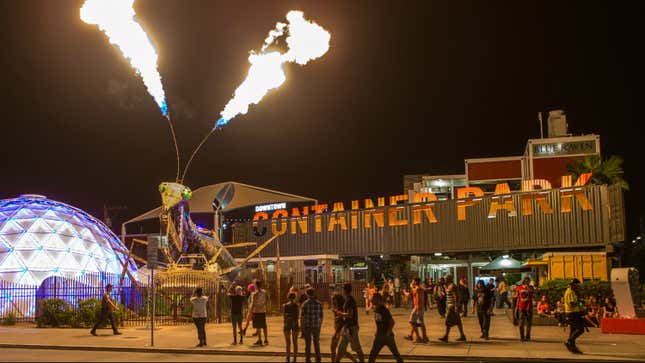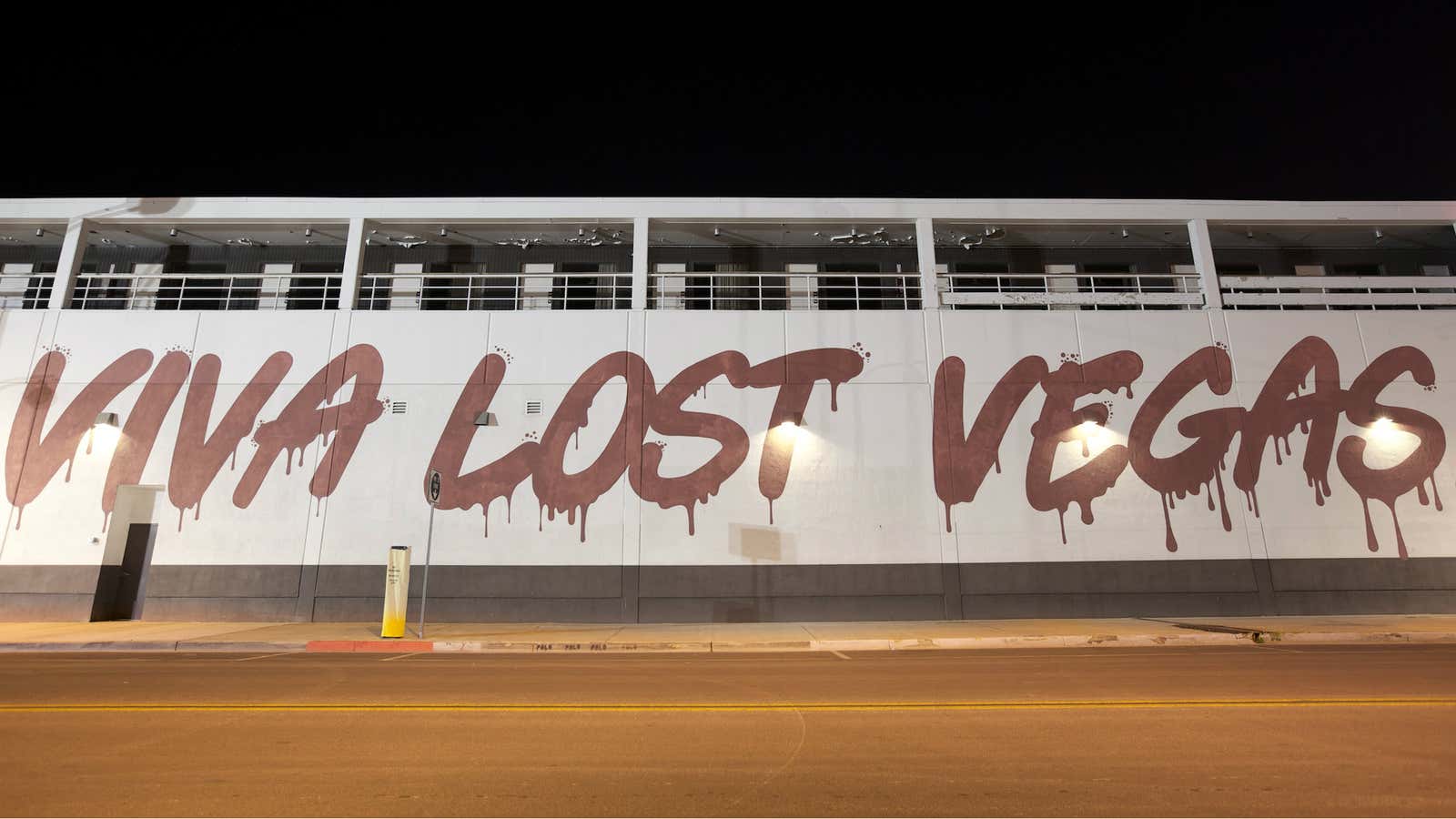In 2012, Zappos CEO Tony Hsieh embarked on a quest to create the ideal city, modeled in part after the Burning Man festival. It would be an extension of the new Zappos headquarters in downtown Las Vegas and an entrepreneurial utopia that fed talent to the online shoe retailer, which has experienced stalled growth and innovation. Four years later, after a round of layoffs and several failed investments, the Downtown Project has fallen short of this vision.
On Tuesday (May 17) at a Recode conference in Las Vegas, Hsieh spoke about how hard it’s been to create this ecosystem. ”That’s what it is to be an entrepreneur. Not every venture is going to work,” Hsieh told Recode’s Kara Swisher, who responded, ”But a lot of hope was dashed.”
When Swisher asked Hsieh whether he considered Downtown Project a success, he replied: “It’s a work in progress—like any startup.”
When Hsieh publicly announced his $350 million investment in downtown Las Vegas, he made some grandiose claims. In five years he would transform the derelict area into a hub of tech, small business, arts and culture, an endeavor that typically takes closer to 20 years. His Downtown Project investment vehicle would make the city the co-working capital of the world, the shipping container capital of the world, and most importantly, the most community-oriented city in the world.
The publicity campaign offered an enticing alternative to the Las Vegas strip. On Las Vegas Boulevard and Fremont Street, a few blocks from the new Zappos campus, there was even a billboard that touted “Downtown makes you smarter.” Hundreds made a pilgrimage to gritty downtown Las Vegas to see how this tech visionary was building a city as a startup. Others relocated to join the movement.
In early 2014, Downtown Project removed the word “community”—originally the lynchpin of its messaging—from its mission statement and core values. In February of this year, Downtown Project’s co-working space nearly shut down. Container Park has become a tourist destination but not the world’s shipping container capital. And The Vegas Tech Fund (now rebranded as VTF Capital) partners say they made too many investments too quickly. A few weeks ago, Downtown Project’s new CEO stepped down.

Small business owners share that one of the biggest difficulties they’ve faced is the lack of foot traffic. In 2014 there was an exodus of residents around the time of the layoffs, and the area hasn’t quite recovered. The local grocery store struggled to attract customers.
Hsieh said his biggest regret was not focusing enough on affordable housing. The downtown area has a few luxury apartments and low-priced housing, but not much in between at the $600-$1,500/month range. (Hsieh now lives in an Airstream Park modeled after Burning Man). That may now be changing: Downtown Project formed a partnership with another real estate company and broke ground on an apartment complex on Monday (May 16).
No doubt downtown Vegas looks very different than it did four years ago. In addition to Container Park, which is designed as an incubator for small businesses, there are a number of bars and restaurants that have brought life to the area. But it has not transformed a community into a startup.
One of its biggest successes—albeit not yet financially viable—is its Life Is Beautiful festival. Downtown Project has poured millions into the festival, which now coins itself as a movement. Maybe that’s just as well for the heart of the Downtown Project to be a festival: after all, it’s how everything began.
Correction: An earlier version of this post included a quote that was misattributed on Recode. The quote “But a lot of hope was dashed” was attributed to Hsieh in the Recode story, when in fact it was Swisher.
Image by Vjeran Pavic on Flickr, licensed under CC-BY-ND-2.0.




